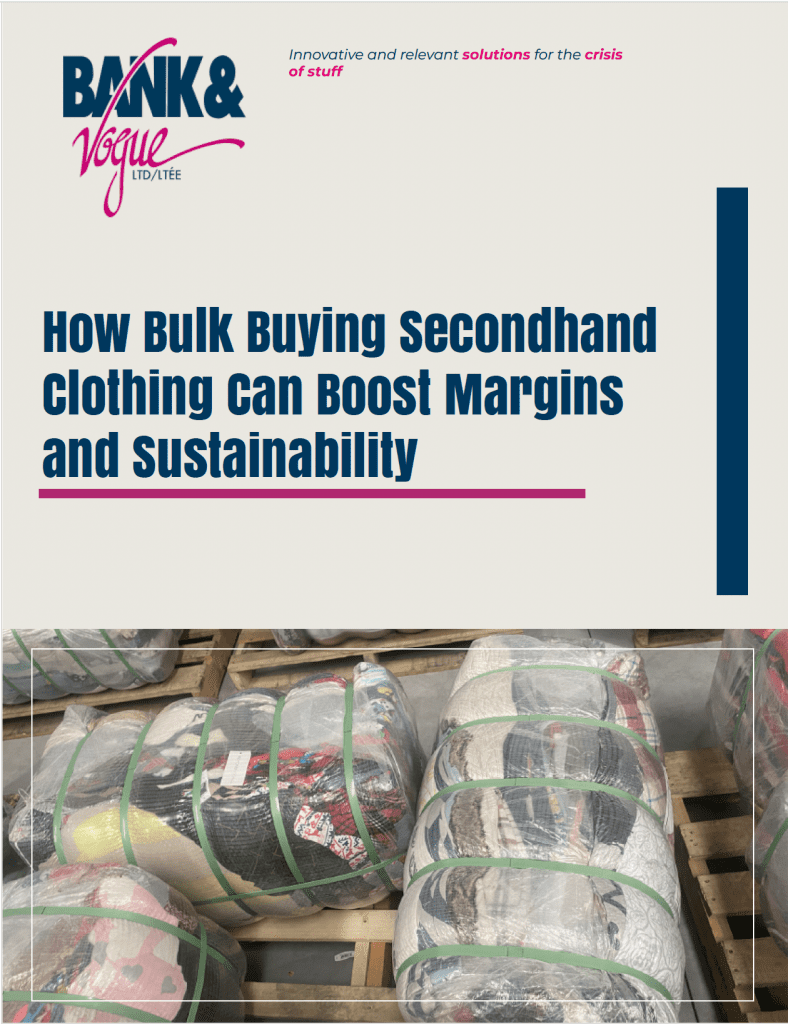Executive Summary
Bulk purchasing of secondhand clothing presents a compelling opportunity for businesses to enhance profit margins while promoting environmental sustainability. By acquiring pre-owned garments in large quantities, retailers can reduce inventory costs, offer competitive pricing, and appeal to the growing segment of eco-conscious consumers. This approach not only supports a circular economy but also addresses critical environmental issues associated with textile waste and resource consumption.
Economic Advantages of Bulk Buying Secondhand Clothing
- Cost Reduction and Profit Margin Enhancement
Purchasing used clothing in bulk allows retailers to obtain inventory at significantly lower prices compared to new apparel. This cost advantage enables businesses to maintain competitive pricing strategies while achieving higher profit margins. By minimizing inventory expenses, retailers can allocate resources to other operational areas, fostering overall business growth. - Access to Unique and Diverse Inventory
Secondhand clothing warehouses often provide a wide array of styles, brands, and vintage pieces. This diversity enables retailers to cater to various customer preferences, including niche markets seeking unique or retro fashion items. Offering such distinctive products can differentiate a business from competitors and attract a broader customer base.


- Alignment with Consumer Demand for Sustainability
As awareness of environmental issues grows, consumers are increasingly seeking sustainable fashion options. By incorporating secondhand clothing into their offerings, retailers can meet this demand and position themselves as environmentally responsible brands. This alignment with consumer values can enhance brand loyalty and drive sales.
Environmental Benefits of Secondhand Clothing
- Reduction of Textile Waste
The fashion industry is a major contributor to textile waste, with millions of tons of clothing ending up in landfills annually. By purchasing and reselling secondhand clothing, businesses help divert these textiles from landfills, extending the lifecycle of garments and reducing environmental pollution. - Conservation of Resources
Producing new clothing requires substantial amounts of water, energy, and raw materials. For instance, manufacturing a single pair of jeans can consume approximately 3,781 liters of water. By opting for secondhand clothing, businesses reduce the demand for new apparel production, thereby conserving these vital resources. - Mitigation of Carbon Emissions
The production and transportation of new clothing contribute significantly to greenhouse gas emissions. Secondhand clothing reduces the need for new garment manufacturing, thereby lowering the overall carbon footprint associated with the fashion industry.
Implementing Bulk Buying Strategies
- Establish Relationships with Reputable Suppliers
To ensure a steady supply of quality secondhand clothing, businesses should partner with reputable wholesalers and used clothing warehouses. These suppliers can offer bulk purchasing options at competitive prices, ensuring consistent inventory levels. - Quality Control Measures
Implementing stringent quality control processes is essential to maintain customer satisfaction. Careful inspection of bulk purchases ensures that only items meeting the desired standards reach the sales floor, preserving the brand’s reputation. - Marketing and Consumer Education
Educating consumers about the environmental and economic benefits of purchasing secondhand clothing can enhance market acceptance. Marketing campaigns highlighting sustainability, cost savings, and unique fashion finds can attract a wider audience and promote positive purchasing behaviors.
Conclusion
Bulk buying of secondhand clothing offers a dual advantage: it boosts business profitability through cost-effective inventory acquisition and supports environmental sustainability by reducing waste and conserving resources. By adopting this approach, retailers can meet the evolving demands of consumers, contribute positively to the planet, and secure a competitive edge in the marketplace.








